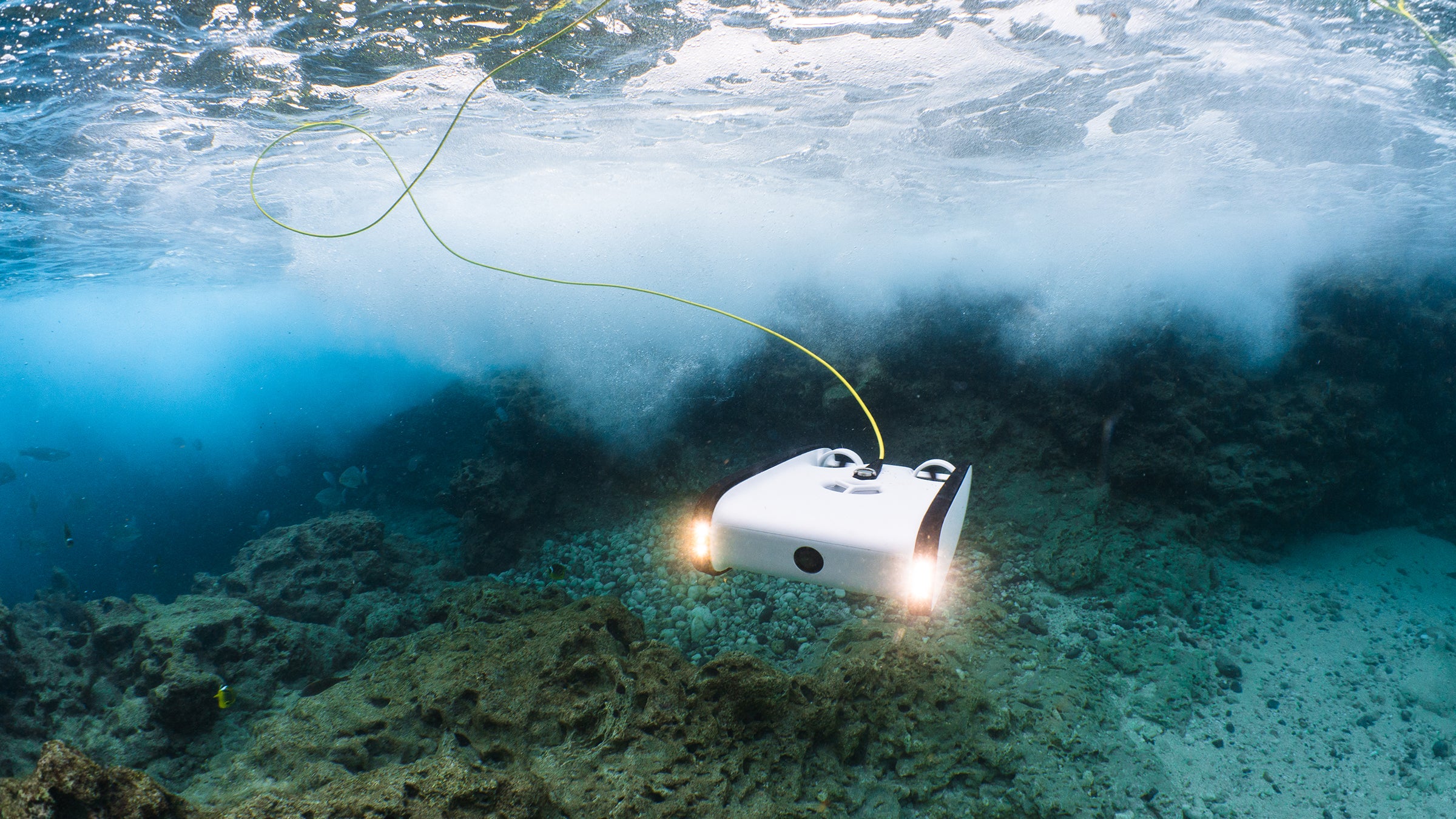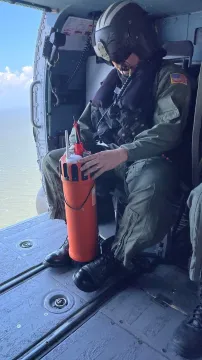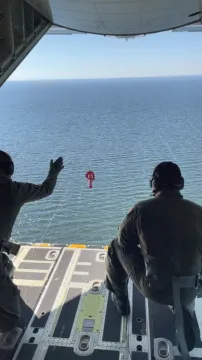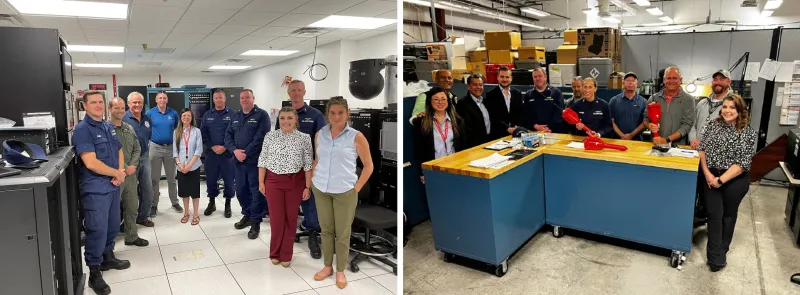
New rugged buoy technologies equipped with Automatic Identification Systems aim to help the U.S. Coast Guard mark and track objects in the water.
Recent years have seen an uptick in the use of geo-tracking technology, which has become so widespread and affordable that we are able to attach small trackers to car keys or luggage to find them with our smartphones. The Science and Technology Directorate (S&T) at DHS is working with the U.S. Coast Guard (USCG) to develop buoys with improved geo-tracking technology for mission specific field use.
Instead of looking for car keys, USCG crews can use this technology to find and mark critical locations or objects in the water using buoys deployed from air or surface vessels. These could include stranded boats, contraband, or hazardous waste that are required to be reidentified after initial search and rescue or interdiction efforts are complete. The two new buoy systems, created by S&T industry partners, are moving into the final round of testing this year after successfully completing functional tests in 2023.
Building a Better Buoy

The USCG handles thousands of cases each year, each potentially involving the deployment of numerous supporting assets necessary to complete those missions. After the initial response efforts, ocean currents and associated weather conditions can carry away watercraft or other manmade materials from the original incident site. This presents a challenge for USCG crews since those materials left behind can become navigation hazards in busy shipping lanes or involve illegal goods. During a drug interdiction, for example, suspects will often throw contraband overboard while fleeing. Determining where these illegal materials are located is an essential part of gathering evidence and protecting the nation’s coasts; therefore, finding them quickly is key.
“The availability of accurate, real-time geo-position data is critical in verifying the drift and motion of items of interest and assisting in the planning of a search and rescue or other response mission,” said Edwin Thiedeman of the USCG Office of C4 & Sensors Capabilities.
“S&T is working closely with the vendors, USCG subject matter experts, and operators to deliver more capable buoys to support multiple USCG missions. These new improved buoys will provide the USCG with much improved accuracy and reliability to execute their important maritime missions,” stated Ron McNeal, S&T Silicon Valley Innovation Program (SVIP) transition director.
While the USCG currently has geo-tracking buoys, the existing systems do not have a secondary locator that is visible at sea level day and night in case of geo-tracking failure. The existing systems are not reusable or rechargeable, so they have to be replaced frequently, representing a significant cost and a potential loss in data. S&T’s SVIP put out a call to industry through the Maritime Object Tracking Technology (MOTT) solicitation for rugged geo-tracking buoys that could be quickly deployed from both air and surface vessels traveling at high speeds. The buoys needed to transmit Automatic Identification System (AIS) and Global Positioning System (GPS) data, which large ships use to share and receive location data while traversing the world’s waterways. Having AIS/GPS capabilities built into the buoy helps ensure USCG crews would be able to quickly pick up signals using their existing communications equipment.

“The ability to link small innovative businesses directly with the government to provide new technologies to fit government needs has a wide range of benefits for all parties. With all of this in mind, MOTT’s goal was to find a start-up company with a new or existing buoy system that could be tailored to the USCG’s needs, resulting in more efficient technology transition and acquisition processes,“ said CDR Rebecca Fosha, deputy of the USCG Research, Development, Test & Evaluation and Innovation Program.
Following the solicitation’s initial launch in March 2020, SVIP awarded funds to two companies: Kenautics, Inc. and Morcom International, Inc. Each business had an existing system they could adapt to the USCG’s requirements: the Kenautics Global Positioning System AIS Navigation and Tracking Buoy and the Morcom Tracking Unit for Navigational Aid. Both companies reached Phase 3 of the SVIP funding lifecycle in 2023, which required functional tests in a real-world setting.
“Startups typically don’t have the human or financial capital to champion large R&D projects,” said Melissa Oh, SVIP managing director. “Using the SVIP phased approach, we are quickly able to assess if a technology will have the ability to respond to the given need and transition the technology to the operators on a timeline that allows smaller businesses to be competitive.”
Go For Test Launch
In August and November 2023, staff from SVIP and the USCG Research, Development, Test & Evaluation and Innovation Program traveled to USCG Base Elizabeth City, North Carolina, to conduct separate test runs for each of the new MOTT buoys. The tests focused on how the buoys operated when dropped from different altitudes and velocities, which involved deploying the systems from an MH-60T helicopter and an HC-130J fixed wing aircraft traveling at various speeds and altitudes. Evaluators were interested in how the rugged designs held up upon impact, given that one version of the buoy has a parachute and the other does not.
It was also important to see whether the buoys successfully continued to function when they impacted the water, while at the same time determining whether the buoy went too deep under the surface of the water. Going too deep underwater could risk the system striking the bottom, where it might potentially get stuck or malfunction once it resurfaced. Participants conducted 10 drops over the course of four days, which provided valuable feedback on improvements that Kenautics and Morcom International can incorporate into the next version of their prototypes.
“It was important to test the buoys in a realistic, operational environment—in this case Base Elizabeth City—to evaluate the structure, functions, and software integrity. Observation from USCG personnel and the companies provided valuable feedback to modify the buoys’ performance to better fit USCG missions,” noted Jason Pharr from the Tactical/Navigation Program Office in the Engineering Support Branch of the USCG Aviation Logistics Center.
In addition to testing the buoys’ ability to withstand water impact, S&T and USCG staff also evaluated their battery life and cybersecurity. Rechargeable batteries are one of the design components that will help make the new buoys more cost effective than current models, so it was important to see how long they could operate in an open ocean environment.

Test sessions were conducted over several flights lasting approximately two hours for each sortie, which gave a realistic scenario of how long it might take USCG crews to return to an incident site once conditions were safe. During operational deployment, the buoys utilized strobe lights, radio beacons and transmitted AIS information approximately every 10 minutes so crews could pick up the signals on both visual and radio frequency scanners. Separate from the drop tests but related to the buoys’ communications capabilities, S&T also conducted Red Team testing with a third party to determine whether there were any cybersecurity issues for either system. The goal was to see whether the buoy signals could be vulnerable to detection or hacking by civilian systems, since this could represent a potential risk.
The Next Wave
Last year’s Phase 3 test sessions provided critical insight into how the MOTT buoys could be improved moving forward. The next rounds of operational evaluations are scheduled to take place later in 2024. The MOTT buoy is one of S&T’s joint projects between S&T and the USCG through SVIP, which also includes a Language Translation device that operates offline in a zero-connectivity environment. These systems could potentially join a growing list of solutions that empower the nation’s homeland security operations while promoting more efficient technology transition-to-market.


